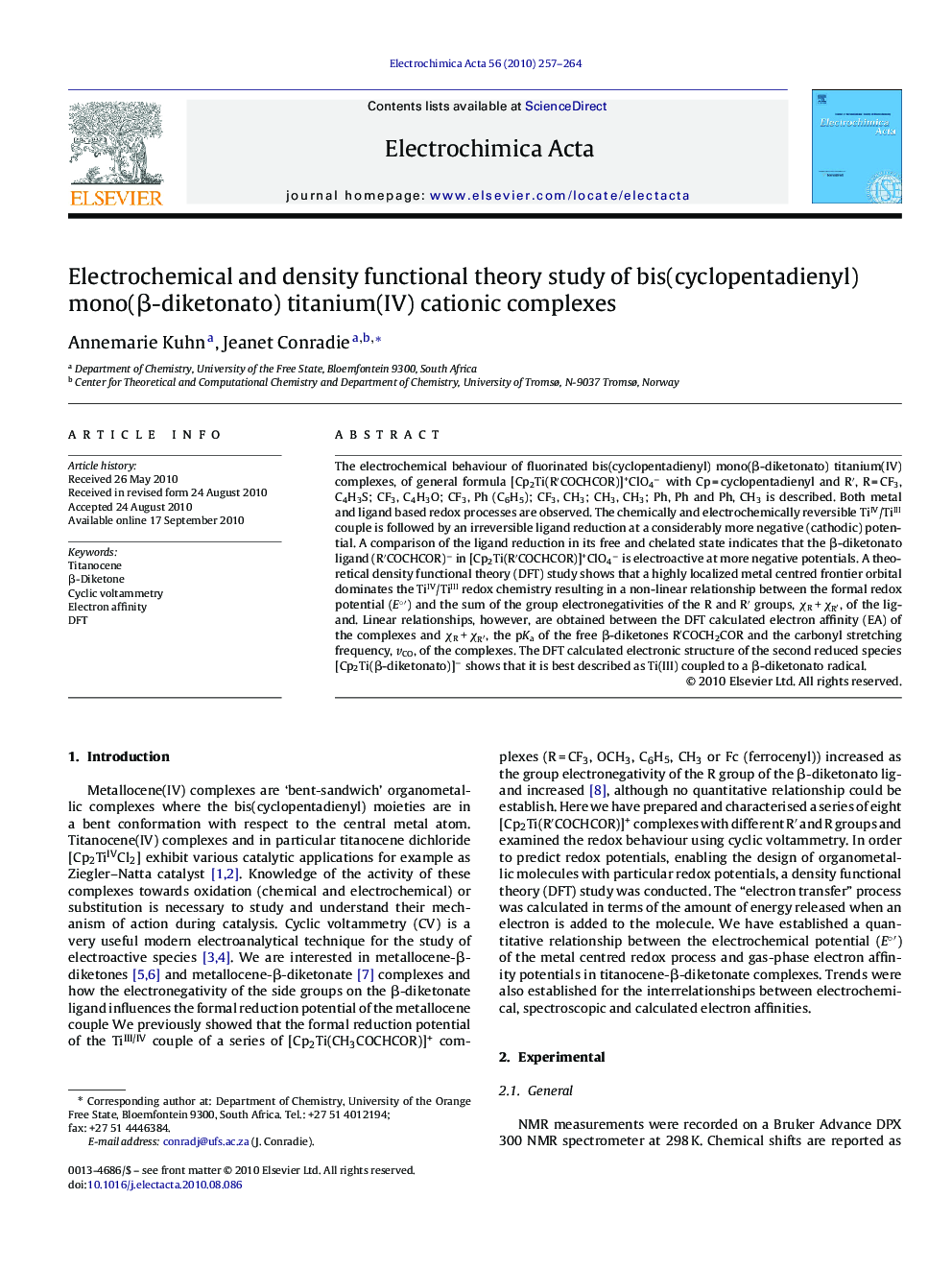| کد مقاله | کد نشریه | سال انتشار | مقاله انگلیسی | نسخه تمام متن |
|---|---|---|---|---|
| 190498 | 459700 | 2010 | 8 صفحه PDF | دانلود رایگان |

The electrochemical behaviour of fluorinated bis(cyclopentadienyl) mono(β-diketonato) titanium(IV) complexes, of general formula [Cp2Ti(R′COCHCOR)]+ClO4− with Cp = cyclopentadienyl and R′, R = CF3, C4H3S; CF3, C4H3O; CF3, Ph (C6H5); CF3, CH3; CH3, CH3; Ph, Ph and Ph, CH3 is described. Both metal and ligand based redox processes are observed. The chemically and electrochemically reversible TiIV/TiIII couple is followed by an irreversible ligand reduction at a considerably more negative (cathodic) potential. A comparison of the ligand reduction in its free and chelated state indicates that the β-diketonato ligand (R′COCHCOR)− in [Cp2Ti(R′COCHCOR)]+ClO4− is electroactive at more negative potentials. A theoretical density functional theory (DFT) study shows that a highly localized metal centred frontier orbital dominates the TiIV/TiIII redox chemistry resulting in a non-linear relationship between the formal redox potential (E°′) and the sum of the group electronegativities of the R and R′ groups, χR + χR′, of the ligand. Linear relationships, however, are obtained between the DFT calculated electron affinity (EA) of the complexes and χR + χR′, the pKa of the free β-diketones R′COCH2COR and the carbonyl stretching frequency, vCO, of the complexes. The DFT calculated electronic structure of the second reduced species [Cp2Ti(β-diketonato)]− shows that it is best described as Ti(III) coupled to a β-diketonato radical.
Journal: Electrochimica Acta - Volume 56, Issue 1, 15 December 2010, Pages 257–264